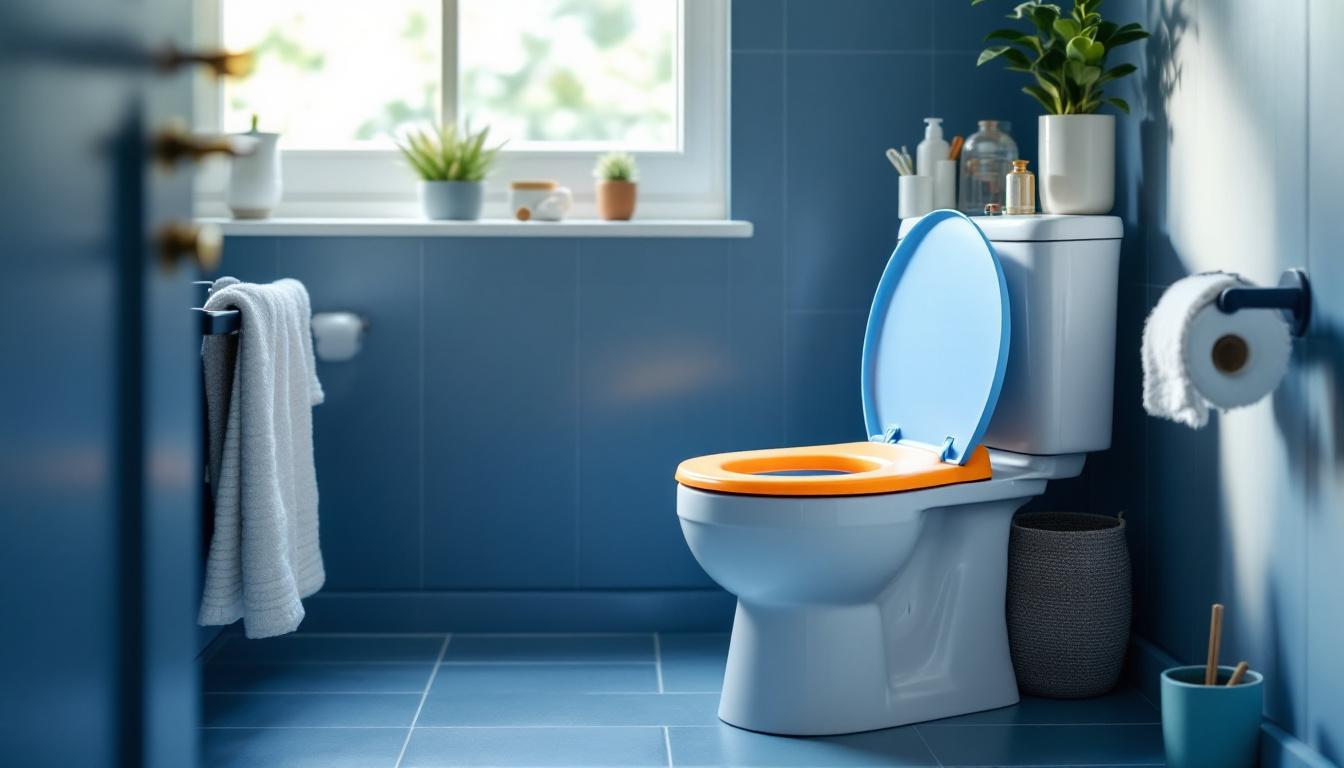Understanding the Intersection of ABA and Toilet Skills Development
Toilet training is a fundamental milestone in a child's development, offering independence, social integration, and hygiene awareness. For children with autism, this process often requires specialized, evidence-based strategies to address unique challenges. Applied Behavior Analysis (ABA) has emerged as a leading therapeutic approach, providing structured, individualized interventions that can significantly facilitate toilet training. This article explores how ABA therapy can optimize toilet training efforts, detailing methods, key components, and resources that empower parents, caregivers, and professionals.
The Impact of Autism on Toilet Training

Does autism affect toilet training?
Autism can significantly influence the process of toilet training due to various challenges unique to children on the spectrum. Children with autism often face obstacles such as difficulties in communication, sensory sensitivities, medical issues, and behavioral differences.
Many autistic children learn to use the toilet later than their typically developing peers. They might resist toileting routines, experience regression after initial success, or struggle to recognize bodily signals indicating the need to go.
Communication challenges play a central role. For example, children may have trouble expressing the urge to use the bathroom, necessitating the use of visual supports, picture cues, or communication devices as part of the training.
Sensory sensitivities could make certain sensations associated with toileting, like the feel of toilet paper or water, overwhelming or aversive for some children. Addressing these sensitivities through gradual desensitization and positive reinforcement helps improve tolerance.
Medical issues, such as constipation or gastrointestinal discomfort, also impact toileting success. Consulting pediatricians and addressing health concerns are crucial steps before and during toilet training.
Behavioral differences, including resistance, temper tantrums, or insistence on routines, can complicate effort. Implementing a structured, individualized approach—using visual cues, scheduled routines, and positive reinforcement—can support progress.
Most children with autism can achieve independence in toilet use with patience, tailored strategies, and professional guidance. Early assessment of skills, consistent routines, and family involvement further foster successful training outcomes.
In summary, while autism does pose additional challenges to toilet training, these can often be overcome with individualized, evidence-based methods. Proper support and understanding are essential to help children develop this vital life skill.
The Role of ABA in Toilet Training

Can ABA help with toilet training?
ABA, or applied behavior analysis, is a proven approach to helping children with autism learn essential skills, including toilet training. It uses structured teaching methods grounded in behavioral principles to make learning efficient and manageable.
ABA supports toilet training by utilizing highly motivating reinforcers, such as praise or preferred items, to encourage successful toileting attempts. It emphasizes scheduled bathroom visits with gradually increasing intervals, helping children develop bladder control and routine awareness. Visual cues, timers, and social stories help children understand what is expected of them.
Desensitization techniques are often used when a child is initially uncomfortable with toileting routines. Discreet trial training simplifies the skill into small, manageable steps, each reinforced immediately after completion. Data collection throughout the process allows therapists and parents to monitor progress, adjust intervals, and ensure the child's readiness.
The approach also involves teaching communication skills, recognizing signs of needing to use the toilet, and managing accidents calmly through positive reinforcement. Overall, ABA methodologies are evidence-based, practical, and adaptable across various environments—whether at home, school, or community settings—making them highly effective for children with autism.
How ABA supports toilet training
| Technique | Purpose | Example |
|---|---|---|
| Positive reinforcement | Encourage successful toileting attempts | Praise, points, or preferred items after success |
| Scheduled routines | Establish consistent toileting times | Timed bathroom visits at regular intervals |
| Visual supports | Clarify expectations and communicate needs | Picture charts or visual cues |
| Discreet trial training | Break the skill into small steps for easier learning | Practice asking for bathroom, sitting on toilet |
| Data tracking | Monitor progress and plan next steps | Recording successes, accidents, and intervals |
| Desensitization | Reduce fear or discomfort with toileting routines | Gradual exposure to bathroom environment |
| Generalization | Transfer skills across different settings | Practice in various environments, home, school |
Additional insights
Using these structured, positive strategies, children with autism can learn to toilet independently and comfortably. The approach respects each child's pace and individual needs, promoting confidence and autonomy while reducing stress for families and caregivers.
Core Components of ABA-Based Toilet Training

What are the key components of ABA-based toilet training?
ABA (Applied Behavior Analysis) provides a structured, evidence-based framework for toilet training children with autism. The core elements include scheduled toileting, reinforcement strategies, teaching communication skills, and using visual supports.
Scheduled toileting involves setting regular, predictable times for the child to sit on the toilet. Initial intervals are often short but are gradually increased based on the child's success, helping establish a consistent routine. This approach helps children develop bladder control and reduces accidents.
Reinforcement plays a critical role. Highly motivating rewards, such as preferred snacks, toys, or praise, are immediately offered when the child successfully urinates or completes a toileting step. Enthusiastic praise, hugs, or access to favorite activities serve as positive reinforcement, encouraging continued progress.
Teaching communication skills is also vital. Children are taught to express their need to use the toilet, which can involve verbal cues, signing, or using picture exchange communication systems. This reduces resistance and promotes independence.
Visual supports, such as cue cards, visual schedules, and timers, help children understand routines clearly. These tools assist in tolerating sitting on the toilet, recognizing when a bathroom break is due, and understanding expectations.
Accidents are addressed calmly and neutrally, reinforcing that setbacks are part of learning. Consistency across all environments, involving parents, caregivers, and teachers, ensures skills generalize well beyond training sessions.
Data collection is essential—tracking frequency of successful attempts, accidents, and child responses guides modifications to the training plan. This systematic approach helps monitor progress and tailor interventions as needed.
In summary, ABA-based toilet training combines structured routines, positive reinforcement, skill development, visual supports, and consistent data-driven adjustments, all aimed at fostering independence and continence in children with autism.
Implementing a Typical ABA Toilet Training Protocol

What is a typical toilet training protocol based on ABA?
A standard ABA-based approach to toilet training involves several structured steps aimed at teaching children with autism to use the bathroom independently. The process begins with an assessment of the child's readiness, which includes ensuring they have bladder control, physical ability to sit on the toilet, and an understanding of contingency concepts like first-then prompts.
Once readiness is established, the training typically starts with scheduled toileting routines. Children are prompted to sit on the toilet every 10 minutes, regardless of whether they show signs of needing to go. These intervals are gradually increased based on the child's success and comfort, sometimes moving to 15, 20, or 30-minute intervals.
Teaching tolerance to sitting on the toilet is a vital component. This involves desensitization strategies, such as gradually increasing duration spent on the toilet and providing positive reinforcement during each step. Visual supports like cue cards or timers assist in maintaining routines.
Positive reinforcement plays a central role. Highly motivating items—such as preferred snacks, praise, or access to favorite activities—are immediately provided after successful urination in the toilet. This encourages the child to repeat the behavior.
Communication training, including teaching children to sign or say words like "potty," helps in gaining their independence and ability to call for bathroom needs. Throughout the process, data collection on elimination patterns and responses guides the adjustment of schedules and reinforcement strategies.
Handling accidents calmly and neutrally is essential for fostering a positive learning environment. When accidents happen, reinforcement is given for participation and efforts, not punishment.
Over time, the goal is for children to urinate independently, stay dry for at least two hours, and develop consistent toileting routines. With persistent application of these ABA techniques, children typically achieve mastery within several weeks up to a few months, leading to improved independence and social participation.
Resources and Support for Parents and Caregivers

What are some educational resources available for parents and caregivers?
Parents and caregivers play a vital role in the success of toilet training for children with autism. Fortunately, there are many resources designed to guide them through the process. Educational guides, such as step-by-step manuals, provide comprehensive information on establishing routines and teaching fundamental skills.
Checklists like the Toileting Readiness Checklist help determine if the child is physically and behaviorally prepared for training. Data sheets, including ABC (antecedent-behavior-consequence) charts, enable caregivers to track daily progress and identify patterns or challenges, facilitating data-driven decisions.
Many resources incorporate principles from applied behavior analysis (ABA), emphasizing positive reinforcement, scheduled bathroom visits, and consistent routines. These evidence-based strategies have been validated through research by experts like Foxx and Azrin.
In addition to written materials, professional support from trained clinicians such as ABA therapists or BCBA (Board Certified Behavior Analyst) consultants is invaluable. They can tailor interventions to meet individual needs and provide ongoing coaching.
Websites and organizations dedicated to autism support also offer valuable tools, including visual cue cards, timers, and communication aids. These resources help caregivers develop personalized, structured toilet training plans that promote independence and confidence.
Overall, utilizing these educational tools and receiving expert guidance helps create a reliable framework, increasing the likelihood of successful toilet training for children with autism.
Managing Challenges: Resistance, Accidents, and Medical Concerns
What challenges might parents face during toilet training, and how can they address them?
Children with autism often encounter specific hurdles when learning to use the toilet. Resistance and refusal are common obstacles, especially if the child insists on particular routines or shows discomfort. Accidents are expected during the learning process, and managing these incidents calmly is important for encouraging continued effort.
Sensory sensitivities can also impact toilet training. Some children may find the toilet seat or the sensation of urination uncomfortable, which can lead to avoidance. Desensitization strategies, involving gradual exposure and environmental adjustments, help reduce discomfort. For example, allowing the child to explore the toilet in non-training times or using visual supports can ease anxiety.
Medical concerns such as constipation or other health issues should be addressed by a pediatrician before beginning training. Underlying medical problems can act as barriers, making progress difficult or uncomfortable.
Parents are advised to maintain patience and consistency throughout the process. Collaborating closely with ABA therapists enables tailoring strategies to each child's needs. Using neutral reactions to accidents, teaching replacement behaviors (like requesting the bathroom), and providing positive reinforcement are effective ways to support progress.
In summary, difficulties during toilet training—such as refusal, resistance, and accidents—require a calm, supportive approach. Addressing sensory sensitivities, ruling out medical issues, and working adaptively with professionals can significantly enhance success.
Additional Tips for Overcoming Challenges:
- Use visual cues and routines to create predictability.
- Desensitize sensitivities gradually.
- Reinforce efforts immediately with praise or preferred items.
- Neutralize accidents without punishment.
- Consult with health professionals for medical concerns.
- Educate caregivers on managing resistant behaviors.
Supporting children with autism through these challenges fosters confidence and promotes skill acquisition, leading to greater independence in daily routines.
The Importance of Data Collection and Generalization
Why is data collection important in ABA toilet training?
Data collection plays a crucial role in ABA toilet training because it offers an objective way to track a child's progress. By recording specific behaviors, such as successful urinations and accidents, parents and therapists can see patterns and determine what strategies are working or need adjustment. This evidence-based approach helps in setting realistic goals and customizing interventions to fit each child's needs.
Consistent data allows practitioners to decide when to increase the time between scheduled bathroom visits, introduce new communication cues, or change reinforcement methods. It also helps identify if new environments, like school or community settings, are supports for transferring learned skills. Ultimately, thorough data collection ensures that toilet training is efficient, effective, and adaptable to different situations.
Tracking progress, increasing independence, skills transfer across environments
Tracking progress involves systematically recording each success and setback in the training process. This data helps identify when a child is ready to increase independence, such as using the toilet without prompts or assistance.
In addition, data supports the process of skill generalization across various settings. When a child's successful toileting routine is documented and reinforced in multiple environments—home, school, and community—they are more likely to transfer these skills seamlessly. This broad transfer is essential for developing long-lasting independence.
Implementing a data-driven approach ensures that interventions stay aligned with the child's evolving needs and promotes consistent, generalized toileting skills that last beyond the training sessions.
| Aspect | Focus Area | Description |
|---|---|---|
| Data Collection | Monitoring Progress | Tracks successes, setbacks, and patterns in toileting tasks |
| Increasing Independence | Promoting Self-Sufficient Behavior | Guides gradual removal of prompts and supports |
| Skills Transfer | Generalization Across Settings | Ensures consistent toileting behavior in various environments |
This structured data approach is supported by established ABA principles and literature, emphasizing its importance for successful and sustainable toilet training.
Fostering Independence and Social Integration
How can ABA therapy promote independence in toilet training?
ABA therapy plays a crucial role in helping children with autism become more independent in their toileting routines. It systematically teaches essential skills such as recognizing the body's signals, requesting the use of the toilet, and completing the entire process without constant adult assistance.
A core strategy involves the use of visual supports, like cue cards and timers, which clarify each step of the routine and help children understand what is expected of them. These tools empower children to perform tasks such as undressing, sitting on the toilet, flushing, and washing hands independently.
Reinforcement is central to ABA methods. When a child successfully completes a step or a full toileting attempt, immediate praise or preferred items motivate continued efforts. This positive feedback builds confidence and encourages self-management.
To promote generalization, skills are practiced across various environments—home, school, or community—to ensure that the routines are understood and performed consistently. Breaking down toilet training into small, manageable steps makes the process less overwhelming and helps children master each component gradually.
As children develop competence, they gain better control over bladder and bowel functions. This progression decreases their reliance on caregivers for toileting needs, fostering a sense of autonomy.
Beyond individual skills, ABA therapy supports social integration by enabling children to participate more fully in daily activities. Being toilet trained allows them to join outings, attend school confidently, and navigate social settings with increased independence. Ultimately, ABA-driven toilet training not only improves hygienic habits but also enhances overall quality of life and social inclusion for children with autism.
Conclusion: Achieving Success with Patience and Support
Children with autism have a promising outlook when it comes to acquiring toilet skills through applied behavior analysis (ABA). This evidence-based approach is highly effective, especially when customized to meet each child's unique needs. ABA training emphasizes breaking down toileting into manageable steps, using positive reinforcement, and regularly collecting data to inform progress.
The success of toilet training heavily depends on having a structured plan that involves caregivers, teachers, and therapists working together. Parents and staff play an essential role by maintaining consistent routines, using visual supports, and encouraging communication about bathroom needs.
While some children may take longer—anywhere from a few weeks to several months—persistent effort and ongoing support significantly increase the likelihood of independence in toileting. Patience, encouragement, and teamwork are vital elements of this process.
Overall, ABA offers a scientifically supported pathway to help children with autism learn vital self-care skills, greatly enhancing their quality of life and ability to participate socially. Positive stories and research highlight that with dedication and the right strategies, many children can successfully master toilet training and gain confidence in their daily routines.
Empowering Progress with Evidence-Based Strategies
ABA therapy offers a proven, customizable framework to help children with autism achieve independence in toilet training. Combining systematic assessments, structured routines, positive reinforcement, and caregiver support creates a nurturing environment for success. As evidence-based practices continue to evolve, the partnership between families and professionals remains pivotal. With patience, consistency, and a supportive environment, children can develop vital toileting skills, opening doors to greater social participation and enhanced confidence.
References
- The Ultimate Guide to Toilet Training - How to ABA
- Potty Training a Child with Autism using ABA
- Toilet Training Children With Autism and Developmental Delays
- [PDF] Intensive Toilet Training Protocol
- Toilet Training Guide For Kids With Autism | Tips & Checklist
- ABA Therapy Tips for Successful Toilet Training
- Potty Training A Child with Autism: A Comprehensive Guide
- The Ultimate Guide to Toilet Training - How to ABA






